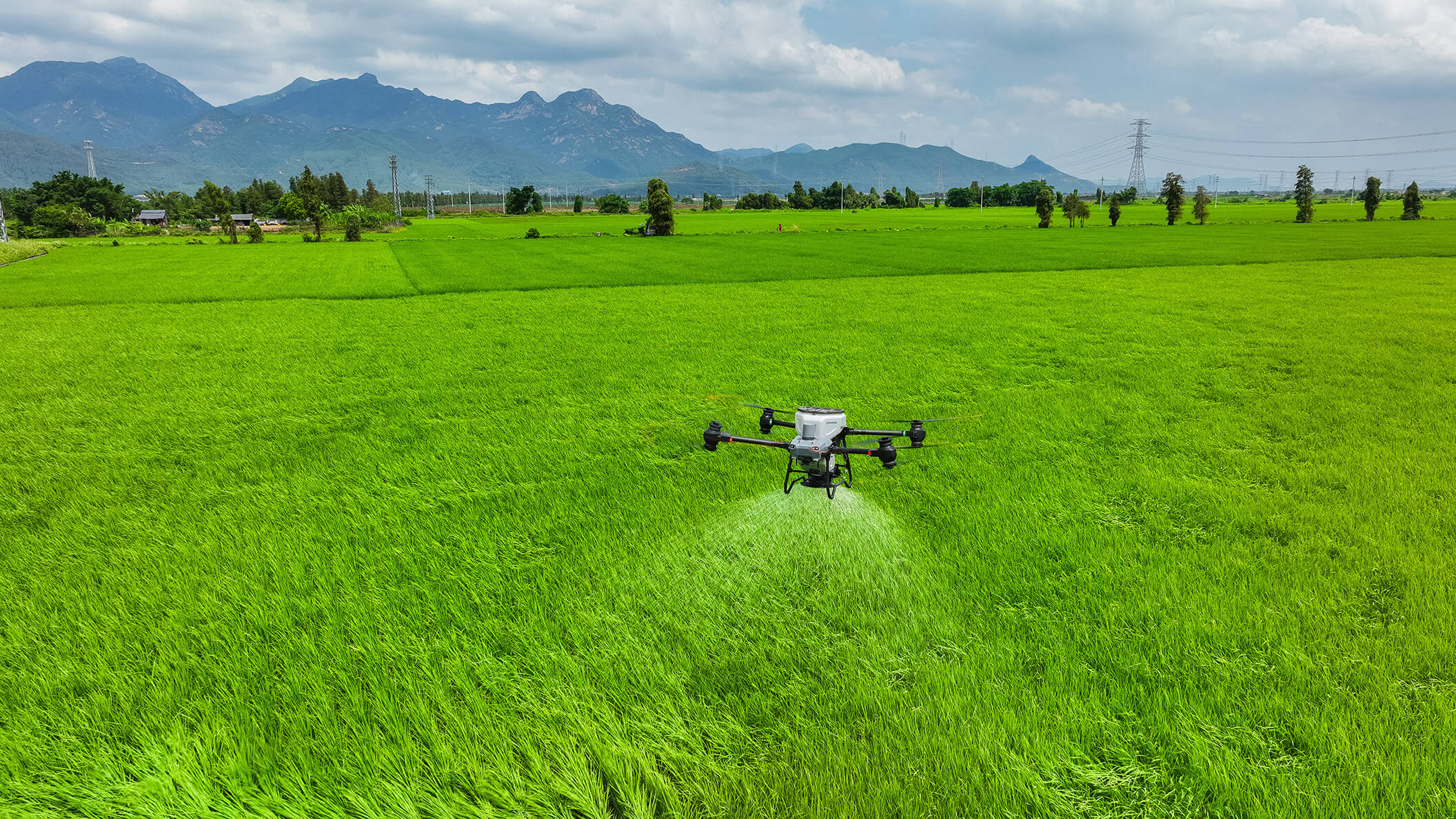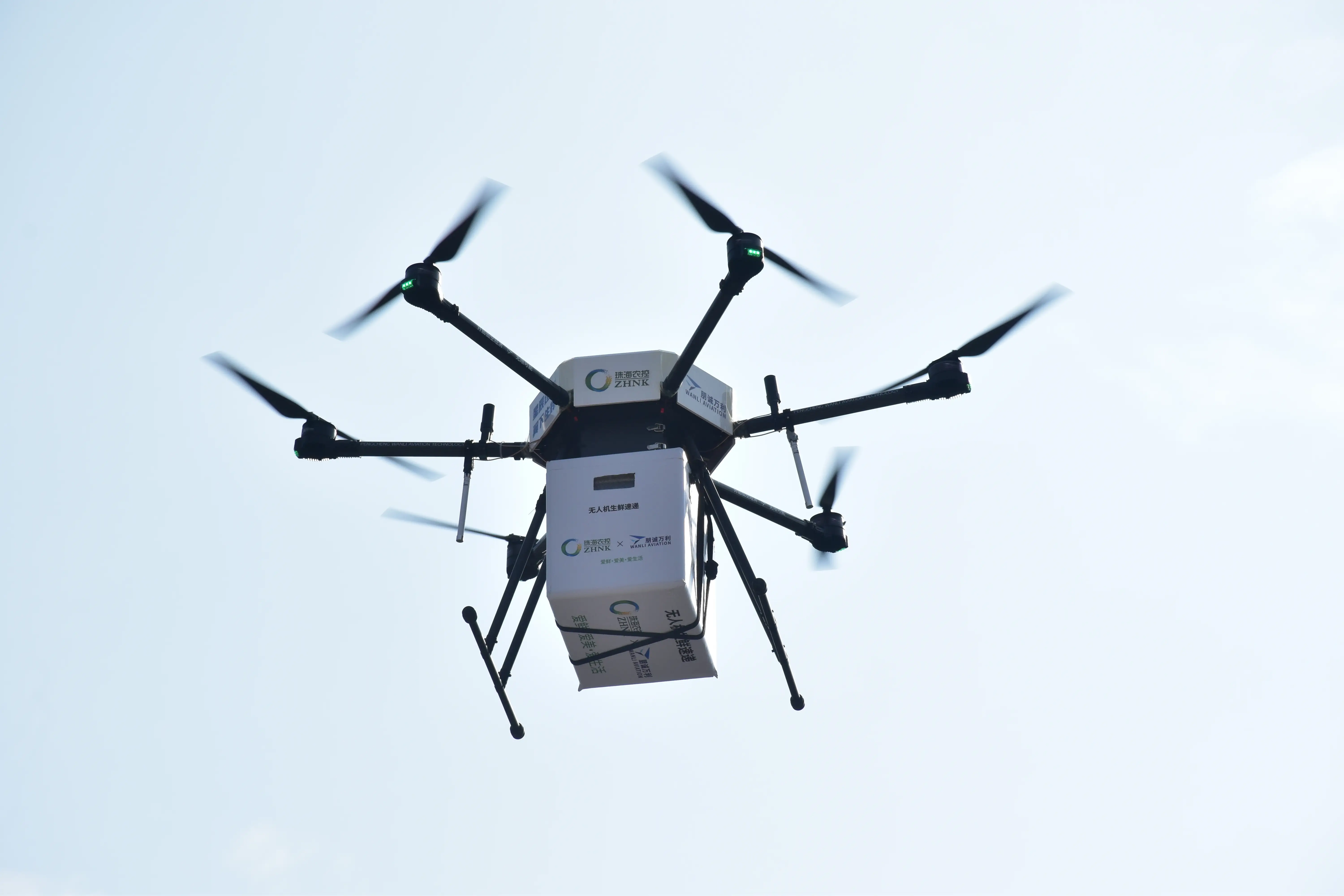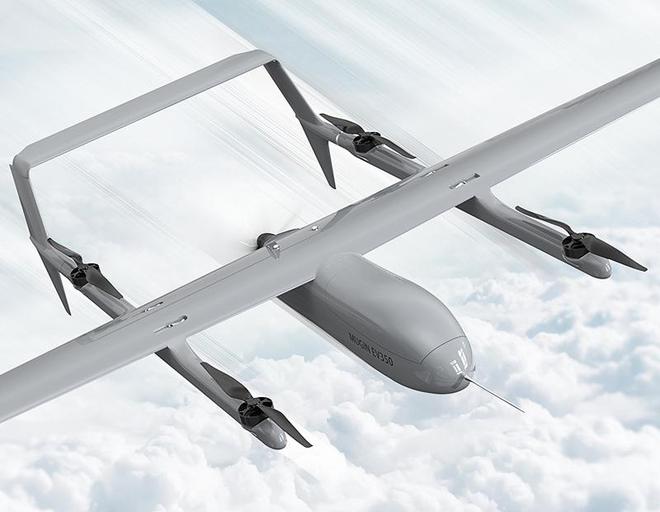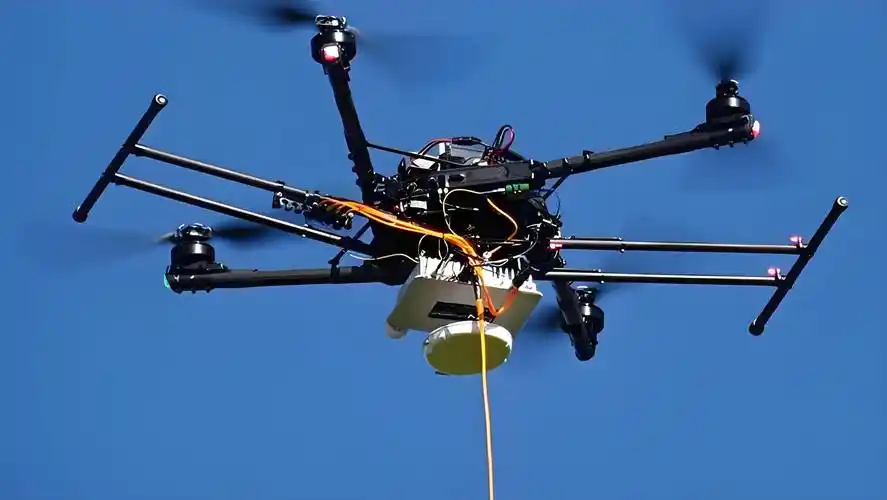
In 2024, the global low altitude economy is entering a period of rapid development opportunities, and governments, enterprises, and research institutions around the world are actively promoting the development of low altitude economy. With the continuous innovation of technology and the expansion of the market, the low altitude economy will become an important component of the global economy, bringing more benefits to human society. The low altitude economy will drive the integrated development of multiple fields such as manufacturing, services, and technology. The advancement of aircraft technology, infrastructure construction, and policy support are the three key factors driving the development of low altitude economy, which together promote innovation and application of low altitude economy.
Global experience in low altitude economic development
The development of the global low altitude economy has gone through stages from early application exploration to standardized development, and then to the current stage of widespread application. In this process, regions such as the United States and Europe have provided important experience and reference for the development of the global low altitude economy due to their first mover advantages in drone technology and general aviation. These experiences include technological innovation, market development, regulatory formulation, and safety management.
A. Leading innovation position of low altitude economy in the United States:
1. Development scale:
The United States is a key player in the global low altitude economy, particularly in the industrial drone market and general aviation sector. According to reports, the United States is the largest market and most active investor in industrial drones, with a complete industrial drone industry chain. At the same time, the United States has a significant proportion of general aviation holdings in the world, nearly half, reflecting its maturity and scale in this field.
2. Military civilian cooperation:
The military civilian cooperation in the United States is particularly prominent in the field of low altitude economy. For example, the US Air Force's "Agile First" program has promoted research on eVTOL technology in military applications, reflecting deep cooperation in military civilian integration.
3. Policy support:
The US government has promoted the development of the low altitude economy through policies and financial support. NASA has played an important role in the construction of advanced urban air traffic (AAM) systems, promoting research on related projects.
4. Technical analysis:
The United States maintains a leading position in key technology areas such as unmanned aerial vehicle technology and eVTOL. American companies have extensive experience in the development and application of unmanned aerial vehicle systems, while exploration and testing of new aircraft such as eVTOL are also ongoing to improve the efficiency and safety of urban air traffic.
5. Market activity:
The eVTOL market is very active in the United States, attracting a large amount of investment and financing. For example, Joby Company went public on the New York Stock Exchange through SPAC and received significant financing. This indicates that the capital market is optimistic about the commercial potential of new technologies in the low altitude economy.
6. Progress in Airworthiness Certification:
The United States has also made significant progress in airworthiness certification. Joby Aviation's JAS4-1 powered takeoff and landing aircraft has obtained special airworthiness conditions from the FAA, paving the way for the commercial operation of eVTOL.
7. Regional market analysis:
North America, especially the United States, is an important region in the eVTOL aircraft market, occupying the highest market share, and is expected to maintain a stable growth rate during the forecast period.
In summary, the United States has demonstrated strong comprehensive strength in the development of the low altitude economy, demonstrating its leading position in the global low altitude economy in various aspects such as infrastructure construction, technological innovation, policy support, and market investment and financing.
B. The experience of low altitude economic development in Europe is worth learning from:
1. Unified aviation policies and regulations: The European Union has promoted the coordinated development of low altitude economy among member states by formulating unified aviation policies and regulations.
2. Support policies in the field of drones: Several European countries have introduced policies to support the widespread application of drones in logistics, agriculture, environmental protection, and other fields, which has promoted the development of the drone industry.
3. Air traffic flow management: The organizational structure of the European air traffic flow management system has evolved into a relatively unified management model, which provides effective air traffic management support for the development of the low altitude economy.
4. "Digital Sky" project: Europe is committed to developing a new generation of air traffic management systems through the SESAR project, which will significantly improve airspace operational capacity, safety performance, and reduce airline operating costs and the impact of air transportation on the environment.
5. Green Aviation Vision: The European aviation industry has proposed a 2050 green aviation vision, emphasizing goals such as climate neutrality, passenger health, and energy flexibility, which provides direction for the sustainable development of the low altitude economy.
6. Integration of the aviation industry: Europe has integrated aviation services with other multimodal transport services, promoting the improvement and optimization of transportation systems, while focusing on minimizing the impact of the aviation industry on non passengers.
7. Education and R&D investment: Europe values education, training, and R&D, establishing human capital, knowledge, and concepts to support aviation development and continuous improvement.
8. Digital Transformation: Europe is laying out digital transformation to ensure that aviation benefits from fields such as artificial intelligence (AI) and big data, providing technical support for intelligent management of the low altitude economy.
9. Safety and security concerns: Europe focuses on the safety, security, and resilience of the aviation industry, ensuring that it can withstand risks, threats, and destructive events in both the real and online worlds.
10. U-space program: The European U-space program aims to integrate drones into urban transportation, and has designed and planned for UTM (Unmanned Aerial Vehicle Traffic Management) and UAM (Urban Air Traffic) systems, providing systematic support for low altitude economic drone applications.
Through these measures, Europe has achieved certain results in the development of low altitude economy, providing valuable experience for other regions around the world to learn from.
C. China leads in the development of Asia's low altitude economy:
Drone manufacturing and technological innovation: In East Asia, especially in China, Japan, and South Korea, the development momentum of drones is strong, with new technologies and products constantly emerging.
1. Policy support and legislation: Some countries and regions in Asia regulate and support the development of low altitude economies through legislation. For example, the Chinese Mainland will officially implement the Interim Regulations on the Flight Management of Unmanned Aerial Vehicles from January 1, 2024, requiring the owners of civil unmanned aerial vehicles to register in their real names according to law.
2. Infrastructure construction: The Asian region focuses on the construction of low altitude economy related infrastructure, such as general airports and take-off and landing points, as well as new low altitude infrastructure, to provide support for the flight needs and supervision of low altitude aircraft.
3. Industrial cluster development: Some Asian countries and regions have established aerospace industrial parks to form industrial clusters and promote the comprehensive development of low altitude economy industries.
4. Technological research and innovation: Asia's low altitude economy continues to innovate in key technological fields such as unmanned aerial vehicle technology and electric vertical takeoff and landing vehicles (eVTOLs), driving technological progress in the industry.
5. International Cooperation and Exchange: Asian countries participate in the development of the global low altitude economy through international cooperation and exchange, such as participating in international drone exhibitions and forums to promote technology and market exchanges.
6. Export Control and National Security: In order to safeguard national security and interests, some Asian countries implement export controls on unmanned aerial vehicles to ensure that the technology is not used for improper purposes.
7. Drone application services: Drones have been widely used in fields such as rapid logistics, emergency rescue, agricultural and forestry plant protection, and aerial surveying, promoting the professional development of drone services.
8. Safety supervision and services: The Asian region emphasizes the safety management of low altitude aircraft, ensuring the safety of flight activities through the establishment of an effective regulatory system.
9. Drone driving training and qualification review: Some Asian countries focus on drone pilot training and qualification review to enhance the professionalism of flight operations.
10. Airspace Design for Drones: In order to promote the widespread application of drones, certain regions in Asia have designated suitable airspace to simplify the application process for flight activities and improve air efficiency.
These experiences indicate that the Asian region has adopted diversified strategies in the development of low altitude economy, aiming to promote the healthy development of low altitude economy through various efforts such as policy guidance, infrastructure construction, technological innovation, international cooperation, and safety supervision.
E. The common trend of global low altitude economy:
1. Technological innovation and application expansion: The core of low altitude economy lies in aircraft technology, especially the development of unmanned aerial vehicles and electric vertical takeoff and landing vehicles (eVTOL). Technological innovation continues to drive progress in the low altitude economy, including more advanced aircraft design, smarter flight control systems, and more.
2. Market size growth: The global low altitude economy market continues to grow and is expected to maintain a high-speed growth trend in the coming years. Asia, especially China, has made significant progress in the field of low altitude economy, becoming an important growth pole for the global low altitude economy.
3. Policy and regulatory support: Governments of various countries support the development of low altitude economies through legislation and policies. For example, China has issued the "Interim Regulations on the Flight Management of Unmanned Aerial Vehicles", the Federal Aviation Administration (FAA) of the United States has issued airworthiness certification specific conditions for eVTOLs, and the European Aviation Safety Agency (EASA) has defined operational requirements for aircraft.
4. Industry chain cooperation and formation: eVTOL manufacturers collaborate with aerospace first tier suppliers to accelerate the formation of upstream industry chains. For example, Honeywell has secured $10 billion worth of orders for its Future Air Mobility (AAM) business, driving investment in the research and development of eVTOL components in the industry chain.
5. Improvement of production and manufacturing capabilities: eVTOL manufacturers are accelerating the construction of production and manufacturing lines and completing product delivery, such as Joby establishing a production factory in the United States and Lilium manufacturing prototype machines on their factory production line in Munich, Germany.
6. Airworthiness Certification and Regulatory Cooperation: The global civil aviation sector is accelerating the improvement of the eVTOL regulatory system, and eVTOL manufacturers are cooperating with regulatory agencies to promote airworthiness certification. The Civil Aviation Administration of China has issued a model certificate for the EH216-S manned unmanned eVTOL of Yihang Intelligent, becoming the world's first airworthiness certificate.
7. Market and investment activity: eVTOL manufacturers actively enter the global market to seize international opportunities, while aviation giants strengthen industry investment, leading to intensified industry competition, such as Boeing's wholly-owned acquisition of unmanned eVTOL manufacturer Wisk.
8. Development of Green Aviation: The development of low altitude economy emphasizes green and low-carbon, and the application mode of green and low-carbon unmanned aerial vehicles is consistent with the national development strategy, promoting the aviation industry to achieve net zero emissions.
9. Business model innovation: The low altitude economy has driven new business models, such as drone delivery and air taxi services, bringing consumers a more convenient service experience.
10. International Cooperation and Competition: With the increasing attention and investment of emerging market countries in green aviation, major enterprises have successively launched cooperation with governments and enterprises in China, Singapore, Dubai and other places, strengthening international cooperation and intensifying competition.
These trends demonstrate the rapid development and future potential of the global low altitude economy, while also pointing out that technological innovation, policy regulations, industry chain cooperation, and market expansion are key factors driving the development of this field.
Development of China's Low Altitude Economy
In recent years, China's low altitude economy has developed rapidly, and the policy level has gradually transitioned from conceptual proposals to a period of rapid development. Local governments are also actively promoting relevant policies to promote the development of low altitude economy in the region. The general aviation and drone industry is an important component of China's low altitude economy, with a continuously expanding market size and expanding application scenarios. However, the development of low altitude economy also faces some challenges, such as insufficient top-level design, complex airspace management, and urgent demand for technological innovation.
The Ministry of Industry and Information Technology, the Ministry of Science and Technology, the Ministry of Finance, and the Civil Aviation Administration of China jointly issued the "Implementation Plan for Innovative Applications of General Aviation Equipment (2024-2030)", which aims to promote the innovative application and development of the general aviation industry and the development of the low altitude economy. In recent years, the government has issued a series of policy documents that clearly identify low altitude economy as a new economic growth point and promote the rapid development of related industries. For example, the "National Comprehensive Three dimensional Transportation Network Planning Outline" for the first time incorporated the concept of "low altitude economy" into national planning, indicating the direction for the development of low altitude economy. In addition, local governments have also introduced relevant policies to support the development of the low altitude economy industry, including the construction of a low altitude flight service guarantee system and the optimization of low altitude airspace resource allocation.
From the perspective of market size, the scale of China's low altitude economy continues to expand. According to data, the scale of China's low altitude economy reached 505.95 billion yuan in 2023, with a growth rate of 33.8%. It is expected that by 2026, the scale of low altitude economy is expected to exceed one trillion yuan, reaching 1064.46 billion yuan. This indicates that China's low altitude economy market is in a stage of rapid growth and has enormous potential for future development.
Secondly, at the policy level, the Chinese government attaches great importance to the development of the low altitude economy and has introduced a series of supportive policies. These policies cover multiple aspects such as low altitude airspace management, general aviation development, and the drone industry, providing strong guarantees for the healthy development of the low altitude economy. At the same time, with the increasing number of low altitude flight activities and the gradual manifestation of the effectiveness of investment in low altitude infrastructure, it will further promote the development of low altitude economy.
In terms of technological application, technological innovation in China's low altitude economy continues to emerge. Especially in the field of electric vertical takeoff and landing vehicles (eVTOL), China has made significant progress. According to the report, the scale of China's eVTOL industry will reach 980 million yuan in 2023, a year-on-year increase of 77.3%, and is expected to reach 9.5 billion yuan by 2026. This indicates that China is leading the world in technological innovation and application in the field of low altitude economy.
In addition, the application scenarios of China's low altitude economy are becoming increasingly diverse. Low altitude economy plays an important role in fields such as agriculture, inspection, firefighting, and logistics in rural areas, as well as aviation, tourism, education, and emergency response in cities. With the continuous development of low altitude economy, its application scenarios will be further expanded, providing more support for economic and social development.
In summary, the low altitude economy market in China has broad development prospects and enormous growth potential. Driven by policy support, technological innovation, and expanded application scenarios, China's low altitude economy is expected to achieve faster and more stable development in the future.
Key directions for multi scenario application of China's low altitude economy
The integration of low altitude economy with multiple fields such as agriculture, logistics, tourism, inspection, and firefighting has demonstrated its extensive application potential. The application of drones in improving operational efficiency, reducing costs, and enhancing safety has promoted the sustainable development of the industry. In addition, the low altitude economy has shown great potential in areas such as environmental protection, urban planning, and emergency rescue.
agriculture
The application of low altitude economy in agriculture mainly focuses on plant protection, monitoring, and data collection. By using drones and other aircraft for precise fertilization, pest control, and crop growth monitoring, agricultural production efficiency and crop yield can be effectively improved, while reducing pesticide use and having a positive impact on environmental protection.
Urban Management and Emergency Rescue
In terms of urban management, low altitude aircraft such as drones can be used for urban security, traffic management, urban planning, and environmental monitoring. In the field of emergency rescue, drones can quickly reach the scene of accidents, conduct on-site assessments and release rescue supplies, greatly improving the speed of emergency response and rescue efficiency.
Logistics delivery
The application of low altitude economy in the field of logistics and distribution is becoming increasingly mature, and unmanned aerial vehicle delivery services have started pilot operations in some cities. Using drones for 'last mile' delivery can effectively alleviate urban traffic pressure, improve delivery efficiency, and reduce logistics costs.
Tourism
The low altitude economy has brought new growth points to the tourism industry. Through low altitude tools such as helicopters, hot air balloons, and gliders, tourists can experience a unique aerial tour. In addition, the application prospects of new types of aircraft such as electric vertical takeoff and landing vehicles (eVTOL) in scenic experiences are widely expected.
Inspection and monitoring
The application of low altitude economy in engineering, marine and infrastructure fields helps to improve inspection efficiency and safety. Drones and other aircraft can conduct regular inspections of infrastructure, promptly identify potential problems, and prevent accidents from occurring.
Transportation Field
The development of urban air traffic (UAM) marks the gradual landing of low altitude economy in the transportation field. As the core of UAM, eVTOL is gradually becoming an effective solution to solve urban traffic congestion due to its advantages of safety, intelligence, economy, and environmental protection.
Industry Convergence
The integration of low altitude economy with multiple industries, such as "agriculture and forestry+aviation", "electricity+aviation", "public security+aviation", etc., has formed a "combined" economic form. This integration not only enhances the efficiency of traditional industries, but also gives rise to new service and business models.
Policy and Technological Development
The development of low altitude economy benefits from policy support and technological progress. The government is promoting research on airspace ownership and computable airspace, and building a digital low altitude intelligent integration infrastructure to promote the development of the low altitude economy. At the same time, technological innovations such as unmanned aerial vehicle technology and electric vertical takeoff and landing vehicles (eVTOL) will be more widely applied, expanding the service scope of low altitude economy.
Industrial Agglomeration and Ecological Cultivation
Shenzhen and other cities are actively building pilot zones for innovative development of low altitude economy, accelerating industrial agglomeration effects through policy guidance and infrastructure construction, forming an industrial innovation ecosystem, and promoting the rapid development of low altitude economy.
In summary, the exploration of the application of low altitude economy in multiple fields is constantly deepening. With the advancement of technology and policy support, it is expected to play an important role in more scenarios in the future, contributing new impetus to social and economic development.
Innovation Practice in Key Regions of China
Hunan, Jiangxi, Guangdong and other provinces, as pilot areas for low altitude economic reform, have achieved significant results. As a leading city in the national low altitude economy, Shenzhen is known as the "Capital of Drones". Its achievements in drone research and development, production, and application demonstrate the enormous potential and development prospects of the low altitude economy.
Layout of Low altitude Economic Industries and Construction of Demonstration Zones
Some cities in China, such as Shenzhen and Guangzhou, have begun to layout low altitude economic industries and build demonstration zones for low altitude economic development. These regions have formed low altitude economic industrial clusters with regional characteristics by gathering enterprises and research and development institutions related to low altitude economy, promoting industrial synergy and resource sharing. For example, Shenzhen and Guangzhou are seeking opportunities for the development of eVTOL (electric vertical takeoff and landing aircraft) startups, while Kunshan, Hefei, Wuhu and other places are also formulating and implementing low altitude economic development plans, constructing testing and inspection and airworthiness certification bases.
Low altitude infrastructure construction and intelligence
In order to support the development of the low altitude economy, key regions in China are accelerating the construction of low altitude infrastructure, including general airports, helicopter take-off and landing points, and new low altitude infrastructure. At the same time, we are also exploring the establishment of a unified and standardized low altitude intelligent infrastructure, such as low altitude intelligent networking and new low altitude aircraft takeoff and landing facilities, to improve the efficiency and safety of low altitude airspace management and operation.
Policy support and regulatory development
The Chinese government has provided policy support for the low altitude economy at the national level and promoted the standardized development of the industry through the formulation of regulations. For example, the Implementation Plan for Innovative Applications of General Aviation Equipment (2024-2030) proposes the goal of forming a trillion dollar market size by 2030. In addition, local governments are actively introducing relevant policies, such as the "Implementation Plan for Building a National General Aviation Industry Comprehensive Demonstration Zone" in Ningbo City, to improve the management system of low altitude airspace and create low altitude safety corridors.
Technological Innovation and Application Expansion
China's key regions have made significant progress in technological innovation of low altitude aircraft such as drones and eVTOLs, and have expanded their applications in multiple fields such as agriculture, logistics, and urban management. For example, drones have maintained steady growth in traditional navigation operations such as agricultural and forestry crop protection and power inspection, while new formats such as air travel, aviation sports, and medical rescue are also accelerating their development.
Improvement of industrial chain and growth of enterprises
The industrial chain of China's low altitude economy is gradually improving, including various links such as raw material supply, core component manufacturing, aircraft research and development and production, and low altitude flight services. At the same time, the number of enterprises in the field of low altitude economy has rapidly increased, especially in Guangdong Province, Jiangsu Province, Hunan Province, Zhejiang Province, Shandong Province and other regions, where these enterprises have played an important role in promoting the development of low altitude economy.
Through the above innovative practices, China's key regions are actively promoting the development of low altitude economy, which not only provides new impetus for regional economic growth, but also provides important experience and demonstration for the development of global low altitude economy. With the continuous advancement of technology and optimization of policy environment, it is expected that China's low altitude economy will play a more important role in future development.
Challenges and opportunities faced
While China's low altitude economy is rapidly developing, it also faces some challenges. Such issues as complex airspace management, difficulty in safety supervision, and insufficient technological innovation. However, with the rapid development of the global low altitude economy and the continuous optimization of domestic policies, China's low altitude economy has also ushered in huge development opportunities. The exploration of international markets, the continuous emergence of new technologies, and the sustained growth of consumer demand have provided vast space for the development of China's low altitude economy.
Policy recommendations
In order to promote the healthy and sustainable development of the low altitude economy, it is recommended that the government take the following measures:
Improve the legal and regulatory system to ensure the standardization of market order and the protection of the rights and interests of all parties.
Optimize the allocation of airspace resources, improve the efficiency of airspace resource utilization, and promote the coordinated development of low altitude economy.
Strengthen safety supervision and emergency response, establish and improve a low altitude flight safety supervision system, and enhance the ability to respond to emergencies.
Promote technological innovation and industrial upgrading, and increase support for technological innovation and research and development investment in the low altitude economy field.
Strengthen international cooperation and exchanges, actively participate in international low altitude economic exchanges and cooperation, and enhance China's voice and influence in the global low altitude economic field.
Cultivate a professional talent team, strengthen talent cultivation and introduction in the field of low altitude economy, establish and improve talent cultivation and incentive mechanisms.
Conclusion and Prospect
The low altitude economy in China is showing a vigorous development trend, with broad market prospects and enormous growth potential. By implementing measures such as improving policies and regulations, optimizing resource allocation, strengthening safety supervision, promoting technological innovation and industrial upgrading, and enhancing international cooperation and exchanges, China's low altitude economy will usher in broader development space and a better future. Looking ahead to the future, with the continuous advancement of technology and the expansion of the market, China's low altitude economy will make greater contributions to economic growth and social progress.




